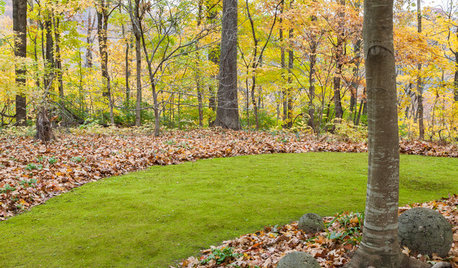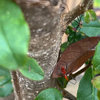natural grub control?
verthwy
17 years ago
Related Stories

LANDSCAPE DESIGNClimate Control: Work With Nature's Elements for the Best Outdoor Space
Consider sun, wind and water where you live for a deck or patio that's as comfortable as possible all year long
Full Story
HOME TECHSwitch On the Phone-Controlled Home
Lock your front door from afar, let your thermostat set itself and more when you use your phone as a control device
Full Story
LANDSCAPE DESIGNErosion Control for Your Seaside Garden
Learn how to protect the soil and plants on your shoreline for a beach landscape that lasts
Full Story
BATHROOM DESIGNHow to Place Shower Controls for Bathing Bliss
Body jets, handhelds and showerheads are only as good as their placement. Here's how to get it right
Full Story
ARCHITECTUREModern Homes That Control the Sun
See architecture that creates shade and manages temperatures — and offers some much-needed visual escapism
Full Story
EDIBLE GARDENSNatural Ways to Get Rid of Weeds in Your Garden
Use these techniques to help prevent the spread of weeds and to learn about your soil
Full Story
GARDENING GUIDESTackle Weeds the Natural Way
Instead of dousing your yard with chemicals to wipe out weeds, let time and nature work their magic via smothering and solarization
Full Story
FEEL-GOOD HOMEDesigning for Pleasure: Savor Your Natural Surroundings
Homes that allow us to experience the land, light, wind and water put us in touch with our primitive comforts
Full Story
LANDSCAPE DESIGNNatural Swimming Pools: More Beauty, No Chemicals
Keep your skin and the environment healthy with a pool that cleans itself, naturally
Full Story
LANDSCAPE DESIGNMoss: Nature’s Carpet for the Garden
Learn how to grow and use this ancient and mysterious natural wonder for delightful texture in the landscape
Full StorySponsored
Central Ohio's Trusted Home Remodeler Specializing in Kitchens & Baths
More Discussions







dchall_san_antonio
Kimmsr
Related Professionals
Windham Landscape Architects & Landscape Designers · Paradise Landscape Architects & Landscape Designers · Surprise Landscape Contractors · Cary Landscape Contractors · Fairfield Landscape Contractors · Hawthorne Landscape Contractors · Lexington Landscape Contractors · Pleasant Grove Landscape Contractors · Ronkonkoma Landscape Contractors · Four Corners Landscape Contractors · Crowley Landscape Contractors · Carlisle Decks, Patios & Outdoor Enclosures · Estero Decks, Patios & Outdoor Enclosures · Haddonfield Decks, Patios & Outdoor Enclosures · West Bend Decks, Patios & Outdoor Enclosuresfancifowl
mprevost
Kimmsr
oldmainer
Kimmsr
oldmainer
dchall_san_antonio
donsherr629
buttercup78
sequoia851
alfie_md6